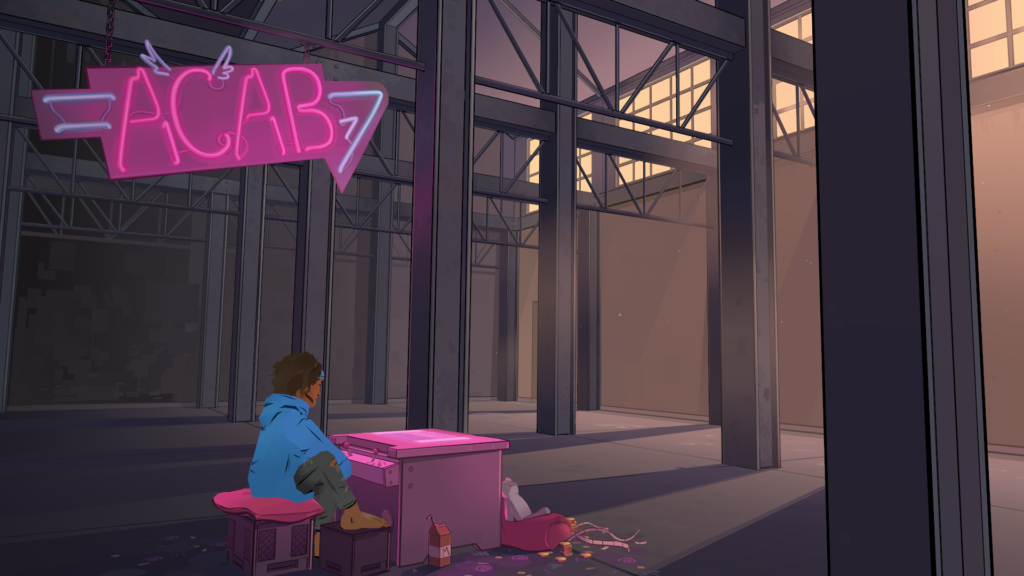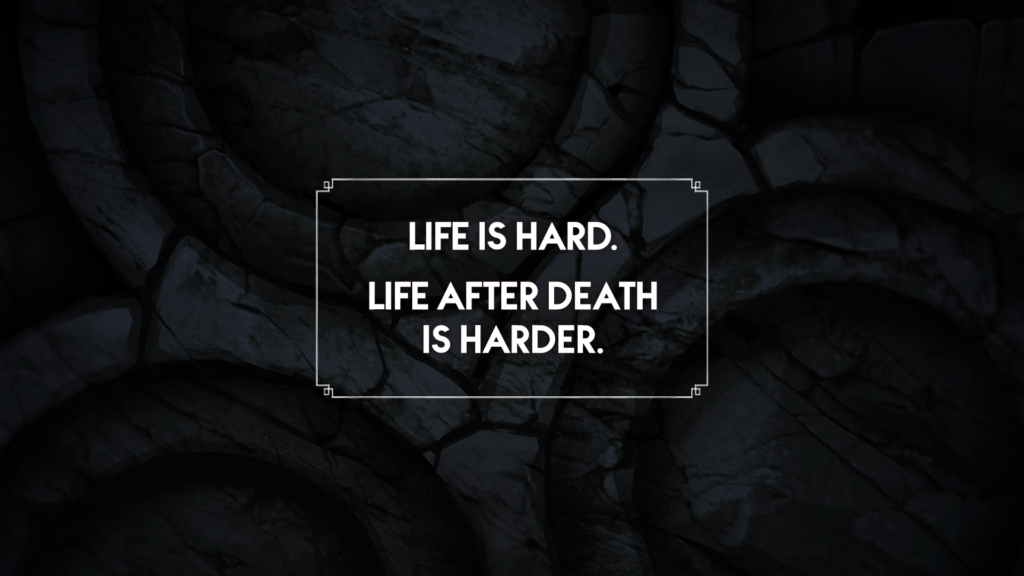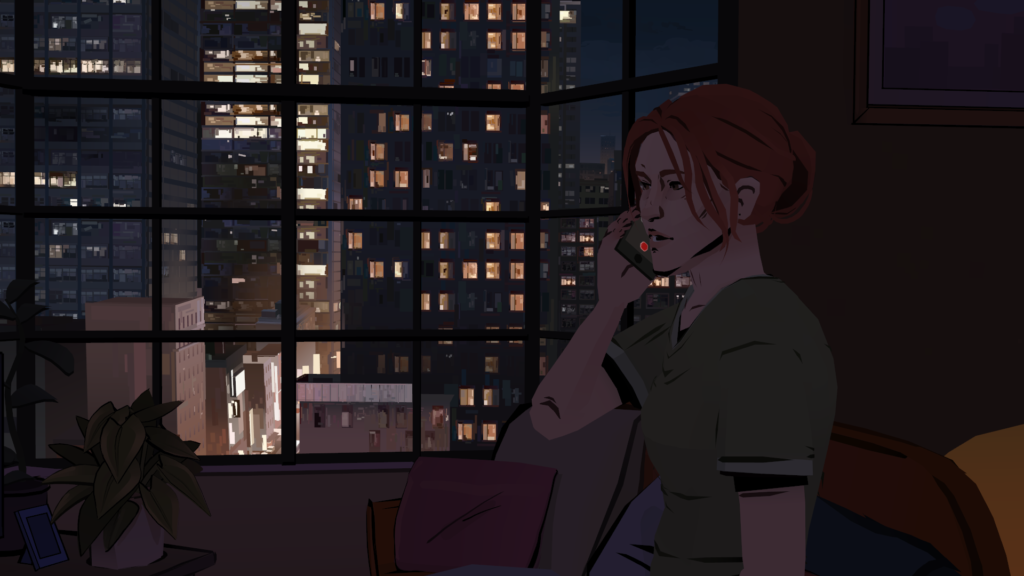
The afterlife can be a racket, and even death can’t keep a good noir-like mystery down. This is the background vibe of Lustration, the new animated VR series whose second episode makes its bow on the Quest TV app on Meta Quest headsets today from New Canvas, an Australian next-gen media company.
Based on the graphic novel series of the same name by Ryan Griffen, a First Nations creative in Australia, the new series uses a unique “multi-camera” setup inside of the Quill graphics engine with multiple timelines in each episode that allow the viewer to cut back and forth between the lands of the living and the dead as the mystery unfolds.
Comics and graphic novels are often the proving grounds of great storytelling, especially great visual storytelling. The last three decades of popular cinema and television attest to this, not just through the adaptation of superhero comics but also through the way in which the storytelling language of comics has become part of vocabulary of film. As VR finds its own storytelling feet, it makes sense that sequential storytellers like Griffen are jumping into the new medium with both feet.
The series boasts an impressive voice cast, including Kevin Conroy (Batman: The Animated Series) and Dante Basco (Avatar: The Last Airbender), and plunges the audience right into a twisty noir tale of death in the afterlife — you read that right — straight from the start.
We caught up with writer/director Griffen, New Canvas’ CEO and Executive Producer Nathan Anderson, and Chief Strategy Officer, Wadooah Wali via email ahead of the release of this, the second of four episodes.

NO PROSCENIUM: This may be a chicken and egg question: Lustration started out as a comic book, what led to it being New Canvas’ first release in this format?
NATHAN ANDERSON: The VR adaptation has been in development for a few years now. It was the output of an Artist Residency that we ran with Ryan back in 2018 when I was at a previous VR company, Start VR that I co-founded. When we spun out New Canvas from Start VR, this project came along and we released a short prototype in Dec 2020. This got some great attention from audiences and Oculus and led to us following on with a series.
NP: Why the parallel timeline/perspective? Why have a hidden track in the story, if you will?
NA: We are exploring the interplay of linear narrative and audience agency. We want our audiences to feel they have some control and a sense of discovery but not at the cost of a considered narrative arc. The parallel perspectives also allow each audience member to have a personalized experience. This kind of model is seen in immersive theatre productions. Something like Sleep No More is a great example of immersing audiences in a linear narrative that they have control of the perspective but not the story.
Ryan Griffen: Audiences are much smarter with storytelling these days and that’s across all mediums. With Lustration I wanted the audience to work harder and discover the story on their own terms. In traditional storytelling in my culture, stories are not given, they are earned, I like the way we can explore this side of things in VR.
NP: What is it about spatialized storytelling that gets you excited, and are there parallels to what you find makes for great comics?
Get Noah J Nelson’s stories in your inbox
Join Medium for free to get updates from this writer.
SubscribeSubscribe
NA: Spatial storytelling is something that is more human and embodied than traditional screen-based storytelling. It invites emotional and visceral reactions and involvements. This is exciting to me.
RG: For me it’s the ability to bring the audience into the worlds I’m creating, they get to step inside a comic book. I love the ability that the audience can stand side by side with the characters as the story plays out.

NP: Translating sequential art stories into other formats can sometimes be a disaster — for every Batman: The Animated Series you get a dozen motion comics with dodgy “animation” — what pitfalls were you looking to avoid as you turned this story into a spatialized one?
NA: The adaptation process needs to be carefully considered and keep the story at its centre. I think too many ports of known IP content do not look at the core narrative experience and adapt it to the medium it is being moved to. Unfortunately, this is not always a straightforward process and often creators can get lazy and think that the profile of the IP will do the job of engaging audiences when it should really be about a careful adaptation that brings the core of the experience to audiences on the new platform in a way that is bringing something new to the IP, not just a derivative.
RG: The spatialized storytelling medium is still relatively new and so we have to discover the rules as we go. This means avoiding pitfalls as we go can be unavoidable. But that’s the exciting thing about the project. We are learning the rules as we go and seeing if they can be broken at the same time.
NP: There’s plans for Lustration to be a multi-platform storyworld: how deep does the rabbit hole go? Are these retellings? Parallel tales? Or is it, as they say “all connected?”
NA: The rabbit hole goes deep and we have multiple platform strategies that go further into immersive and metaverse channels as well as traditional media. I personally think this property has a lot of potential as a world that can convey the contextual complexities of our society in a globally accessible way. All cultures, beliefs and practices can (and probably do) cohabitate in the after life.
Wadooah Wali: New Canvas will also be launching a blockchain powered community platform with social tokens and NFTs in Q2 2022. We are moving into a new era of content distribution and engagement where audiences can become active communities, participating in, and generating ownership of the content they love. We are very excited about the social token that will launch for Lustration in Q2 and will also release a very limited run of NFTs of some of the amazing artwork from Lustration. The tokenized community for our new series will have access to exclusive content and be invited to participate creatively and commercially with us as the property develops.
RG: We aren’t short on story in the Lustration world and the more I can hide little secrets within each platform the more fun discovering the story will be for our audiences. We have only scratched the surface.
The first two episodes of Lustration’s VR adaptation are available for free today on Oculus TV. Episode three drops on April 29th, with the finale hitting May 13th.
The Lustration graphic novel series is available from Gestalt Comics.
Discover the latest immersive events, festivals, workshops, and more at our new site EVERYTHING IMMERSIVE, new home of NoPro’s show listings.
NoPro is a labor of love made possible by our generous Patreon backers. Join them today!
In addition to the No Proscenium website, our podcast, and our newsletters, you can find NoPro on Twitter, Facebook, YouTube, Instagram, in the Facebook community Everything Immersive, and on our Discord.


















Discussion